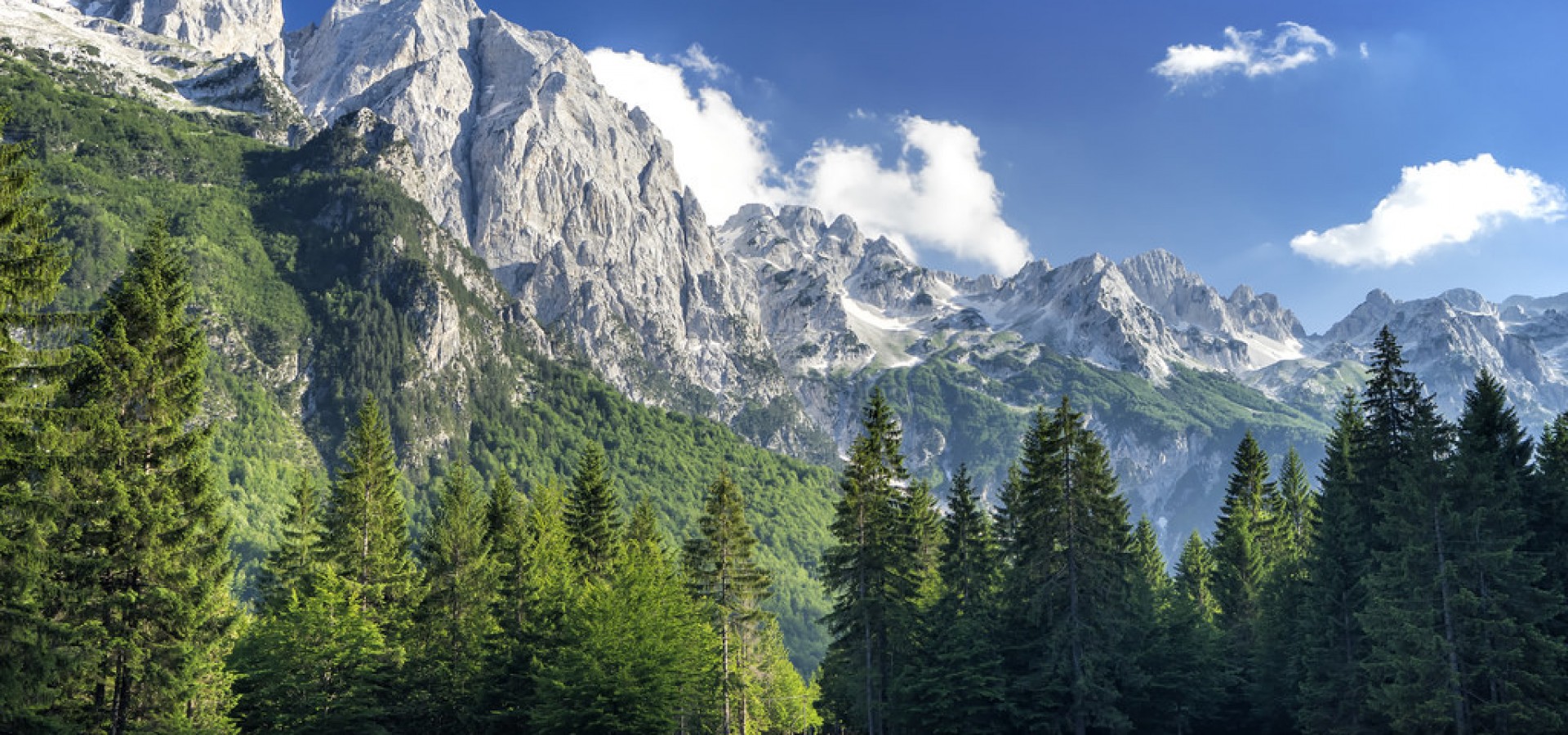Cultural and Historical Travel at its best! Let us take you on a spectacular Sightseeing Tour across the beautiful Balkan Peninsula in Southeast Europe.
Day 1: DUBROVNIK AIRPORT – DUBROVNIK (21 km)
Pick up at Dubrovnik airport and transfer to Hotel. A city tour in Dubrovnik (Dubrovnik was originally called Ragusa and was formed in the 7th century when coastal residents took refuge there under the onslaught of barbarian invasions. Walls were quickly built to protect the new settlement).
WHAT TO VISIT:
· Stradun Street
· Onoforius Fountains
· Clock Tower
· Sponza Palace and fountain
· Ivan Grundulic Square
· Riznica Catedral
· Dominiken Monastery
· Fransisken Monastery
Day 2: DUBROVNIK – MOSTAR – SARAJEVO (270 km)
Departure to Mostar, one of the main cities, which has passed by the terrible combat when the country was divided. Mostar is a city and municipality in Bosnia Hercegovina the biggest and the most important city in Hercegovina and the center of the Hercegovina neretva canton of the federation. Mostar is situated on the Neretva river and is the 5th largest city in the country. Mostar was named after its Old Bridge and the towers on its sides “the bridge keepers” (natively: Mostari). The bridge was destroyed by Croatian defense Council units during the Bosnian war, on November 9 1993. Possibility of pictures of the ruins and building, which still have the marks of the war.
WHAT TO VISIT
· The Mostar bridge
· The old Pazar
· The old town
Drive to the capital Sarajevo. Accommodation & overnight in Sarajevo.
Day 3: SARAJEVO – KOLASIN (250 km)
After breakfast in the hotel, tour in Sarajevo. Possibility to see and panorama the main important sights of Sarajevo. Archaeologists can safely say that the Sarajevo region has been continuously inhabited by humans since the Neolithic age. The most famous example of a Neolithic settlement in the Sarajevo area is that of the Butmir culture. The discoveries at Butmir were made in the grounds of a modern day Sarajevo suburb, Ilidza, in 1893, by Austro-Hungarian authorities during construction of an agricultural school.
WHAT TO VISIT:
· Bugumil city
· Jewish gettho
· Kosevo Stadium
· National Library
· Bosna River
· Old Bazaar
· Orthodox Church
· Military house
· National Theater
· Old ottoman bridge
· Bath Bezistan and clock tower.
Afterwards depart to Kolasin, great mountain village (place with a lot of ski resorts with fantastic fresh air). Accommodation & overnight in hotel in Kolasin.
Day 4: KOLASIN – PRISTINA (230 km)
After breakfast in the hotel, depart to Kosovo. First stop will be in Pristine, in Roman times a large town called Ulpiana existed 15 kilometers to the south of modern–day Prishtina, this city was destroyed but was restored by the Emperor Justanian. Today, the town of Lipljan sits on the site of the Roman city, and remains of the old city can still be seen.
WHAT TO SEE:
· Sultan Murad Hudavendigar Mosque
· Fatih Sultan Mehmet Khan Mosque and Bath
· Statue of Skanderbeg
· Parliament
Day 5: PRISTINA – PRIZREN – SKOPJE (185 km)
Proceed to Prizren (Prizren is an ancient historical town alongside the River Lumbardh, lying beneath the picturesque mountain of Sharr). Archaeological research proves that Prizren is one of the oldest inhabited towns in Southeast Europe. Throughout history, Prizren has been subject to major social influences, which have resulted in fluctuations in its economic, social and cultural development.
WHAT TO SEE:
· Sinan Pasa Mosque
· Ottoman Graves
· Gazi Mehmet Pasa and Mamusa
Proceed to Skopje – a city in the West where you can find signs of the East, as it was under the rule of the Ottoman Empire for a long time. We spend the day in the old town visiting the Daud Pasha baths, once the largest baths in the Balkans now the City Art Gallery; the imposing Mustafa Pasha Mosque and the bustling old market area.
WHAT TO VISIT:
· Clock Tower
· Turkish Bazaar
· Isa Bey Mosque
· Kapan Khan
· Sulu Khan
· Davut Pasa Bath
· Stone Bridge
· Orthodox church of the center
Day 6: SKOPJE – OHRID (175 km)
Proceed to Ohrid and start the tour from the lake side resort of Ohrid, classified as a UNESCO’s World Cultural Heritage site. Thanks to the activity of St. Clements and St. Naum of Ohrid, the first Pan-Slavic University in Europe – the famous Ohrid Literary School – was founded here. Sightseeing tour includes the church of St. Sofia (11th century), the most eminent medieval monument in Macedonia with magnificent Byzantine fresco paintings, and St. Clement’s Church with its icon of Annunciation. Afternoon short drive for a visit to the St. Naum Monastery built on the shores of the Ohrid Lake in 900 A.D. The monastery is dedicated to the Slavic missionary and educator St. Naum of Ohrid.
WHAT TO VISIT:
· St. Sofia
· St. Panteleimon
· Roman Theater
· Work Shop of Ohrid Pearl
Accommodation & overnight in Ohrid.
Day 7: OHRID – POGRADEC – KORCE – PERMET (225 km)
After breakfast depart for Pogradec along one of the most breathtaking roads in Albania. Trip to Pogradec is on the shores of Lake Ohrid and the village of Tushemisht where the old fishing villa of the dictator is situated.
A combination of gorges, mountains, colorful fields, river canyons and forests accompanies us on this long road trip but with amazing natural beauty. Arrival in Korca and visit the Museum of Medieval Art in Korca and the Mirahori mosque. After the visits continue to Permet on the shores of Vjosa river.
WHAT TO VISIT:
· Village of Tushemisht
· Museum of Medieval Art
· Mirahori Mosque
Accomodation and overnight in Permet.
Day 8: PERMET – GJIROKASTER (60 km)
After breakfast depart to Gjirokastra, a museum town under the protection of UNESCO as a World Heritage Site with beautiful and very distinct architecture. Afterwards, drive to Gjirokastra where we will visit the fortress of Gjirokastra, part of which was turned into a political prison for dissidents of the regime, also the Arms Museum. Visit to the Ethnographic Museum, which is also the house the Albanian dictator was born in, as well as a 300 year old house next to it, where the grandeur of Gjirokastra’s master builders can be observed.
WHAT TO VISIT:
· Gjirokastra castle
· Old Town
· Ethnographic Museum
Overnight in Gjirokaster.
Day 9: GJIROKASTER – BUTRINT – SARANDE (88 km)
After breakfast we depart for Saranda, where we visit the ancient city of Butrint another UNESCO World Heritage Site, considered the best archaeological site in Albania and probably one of the most important in the Balkans. The city was first settled by Greek colonists and was continuously inhabited for centuries forming archaeological layers of passing civilizations, giving archaeologists the possibility to study continuity through time. It is situated on a beautiful peninsula among dense vegetation. The site has been occupied since at least the 8th century BC, although myths associated with its origins speak of the city’s foundation by Trojan exiles.
WHAT TO VISIT:
· Lekursi castle
· Butrint (UNESCO)
Accommodation and overnight in Saranda.
Day 10: SARANDE – VLORA (125 km)
After breakfast depart for Vlora. Drive on the spectacular Albanian Riviera looking down at the Ionian Sea. Breathtaking scenery await us at the Llogara pass – 1000 m above sea level. Stop for coffee and refreshment at the top of Llogara. On the way stop in Porto Palermo for a visit of Ali Pasha Castle, one of the most picturesque fortress of the 18th century, built by Ali Pasha, famous ruler of the southern part of Albania.
After the visit we drive to Vlora one of the most important historical cities, because it was here that in 1912 the National Assembly declared Albania an independent state. Free afternoon to explore the coastal city of Vlora. Overnight in Vlora.
WHAT TO VISIT:
· Ali Pasha Castle
· Independence Museum in Vlore
Day 11: VLORA – BERAT (155 km)
After breakfast depart for Berat, one of the most visited and characteristic towns in Albania under the protection of UNESCO as a patronage of humanity for its architectural uniqueness. Berat castle is of particular interest as people still live within its walls in their traditional houses, as have their ancestors for centuries. The castle used to have over 40 churches of which 7 still remain including St. Mary’s church turned into Onufri Museum. We visit the Castle and the Onufri Museum. Accommodation in Berat in a characteristic house turned hotel in the old district.
WHAT TO VISIT:
· Old town
· Onufri Museum
· Castle
Accommodation and overnight in Berat.
Day 12: BERAT – DURRES (100 km)
After breakfast we depart for Durres one of the oldest (founded in 627 B.C.) and most important cities in Albania where we have lunch (optional). After lunch we take a sightseeing tour of the Amphitheater situated in the middle of the modern city in an inhabited area, and the Archaeological museum rich in artifacts found in the city and its suburbs. Overnight in Durres.
WHAT TO VISIT:
· Old town
· Amphitheatre
· Archaeological museum
Day 13: DURRES – KRUJE – TIRANA (65 km)
Proceed Kruja – the center of Albanian resistance against the Turks under our national hero Scanderbeg. He kept them from crossing into Western Europe for 25 years, thus earning the title “Protector of Christianity” given by the Pope. We visit the Scanderbeg Museum, a very rich Ethnographic Museum and the Old Bazaar.
WHAT TO VISIT:
· Old Bazaar
· Skanderbeg Museum
· Ethnographic museum
Transfer to Tirana for a city tour of Tirana starting from the Scanderbeg square. Visit the National History Museum, E`them Bey Mosque, Clock Tower etc. Then continue to the main boulevard where are found the different ministries: Academy of Fine Arts, Main University etc.
Overnight in Tirana.
Day 14: TIRANA – SHKODER (95 km)
After breakfast we will visit the National Historic Museum in Tirana offering an in depth introduction to Albanian history from prehistoric times to present day.
After breakfast we drive to Shkodra the most important town of north Albania, and the Illyrian capital, in the 3rd century BC. Visit Rozafa Castle from where spectacular views all around can be admired and the feel of supremacy the Illyrians would have felt against enemies standing in such an imposing fortress. We will also visit the Historic Museum situated in a traditional house of Ottoman architecture, where the archaeology and ethnographic pavilions are small but very interesting. We will also take a walk in town where we will be able to see the Roman Catholic Cathedral, the only one in the country prior to abolition of faith by the communist regime. In 1967 it was turned into a palace of sports but has now been restored.
WHAT TO VISIT:
· Old town
· Rozafa castle
· Marubi museum
· Historic Museum
· Roman Catholic Cathedral
Overnight in Shkodra.
Day 15: SHKODER– BUDVA – KOTOR (110 km)
After breakfast we continue to Montenegro. On the way to Adriatik Riviera, some brief stops to Budva city and St. Stefan. Continue to Kotor, even though we are in the XXI century the science still, unfortunately, hasn’t established when the first lodgment in Kotor was founded. Historical resources, as the earliest period connected to Kotor, mention the antique period. According to some other data, Kotor is 2 millenniums old, and its name stems from the word DEKATERA (from the old Greece KATAREO – meaning hot).
WHAT TO VISIT:
· The cathedral of saint Tripun
· The Church of Saint Luka
· The old town.
Accommodation and overnight will be in Kotor.
Day 16: KOTOR – HERZEG NOVI – DUBROVNIK (95 km)
Spend the morning at leisure. Departure to Dubrovnik through Herzeg Novi. Afternoon free in Dubrovnik.
Overnight in Dubrovnik.
Day 17: DUBROVNIK Airport (21 km)
At leisure until departure to airport where we say goodbye. End of our service.
Tour Includes:
Accommodation in good 3* 4* standard hotels with breakfast.
Transportation with comfortable a/c vehicle.
English (French, German, Italian, Spanish, Dutch, Portuguese, Chinese etc), speaking tour guide/driver.
All taxes.
Excludes:
Flight Tickets.
All entrance fees.
All other meals apart from breakfast.




